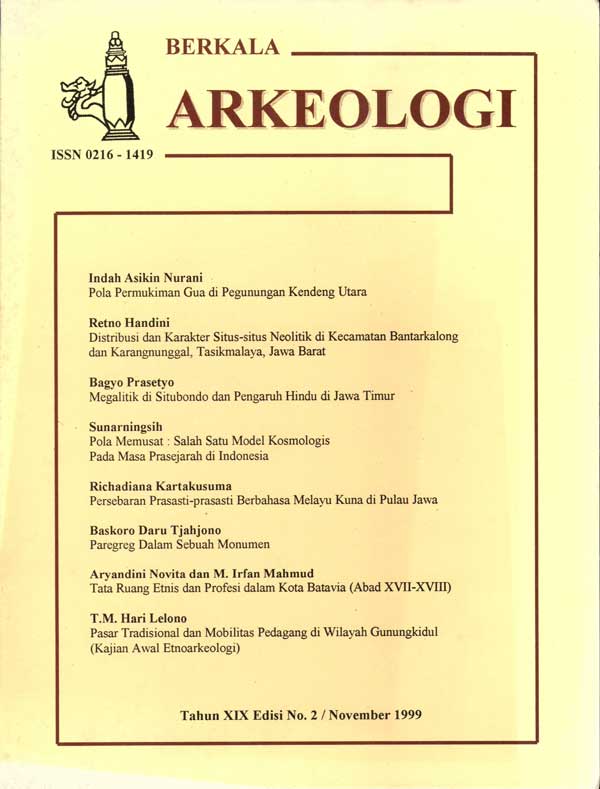DISTRIBUSI DAN KARAKTER SITUS-SITUS NEOLITIK DI KECAMATAN BANTARKALONG DAN KARANGNUNGGAL, TASIKMALAYA, JAWA BARAT
Main Article Content
Abstract
The pattern of workshop sites from the neolithic culture which is located not far from the river--and especially in Bantarkalong and Karangnunggal Subdistricts along with the technological character--reminds us of other similar sites such as the stone bracelet workshop sites in Limbasari and Ponjen (Purbalingga) areas, which are generally also near streams. This can be understood, because at that time, rivers played a very important role for human life, both for transportation and for meeting their daily water needs, so that their shelter was always strived to be close to water sources. Especially during the Neolithic era, they have started to apply farming methods, so that the need for water is very high.
Article Details

This work is licensed under a Creative Commons Attribution-NonCommercial-ShareAlike 4.0 International License.
References
Bemmelen, R.W. van, 1949. The Geology of Indonesia, The Hague Martinus Nijhoff.
Djubiantono, Tony, 1998. Geologi Daerah Karangnunggal, Kabupaten Tasikmalaya, Provinsi Jawa Barat, Balai Arkeologi Bandung: Laporan Hasil Penelitian Arkeologi, Bandung.
Handini, Retno dan Truman Simanjuntak, 1998. Laporan Penelitian Arkeologi Situs-Situs Neolitik di Kabupaten Tasikmalaya, Provinsi Jawa Barat, Bidang Prasejarah Puslit Arkenas, tidak diterbitkan.
Heekeren, H.R. van, 1972. The Stone Age of Indonesia, Gravenhage Martinus Nijhoff.
Soejono, R.P., (ed), 1984. Sejarah Nasional Indonesia Jilid I, Jakarta Balai Pustaka.
Simanjuntak, Truman dan Harry Widianto, 1990. Laporan Penelitian Arkeologi Situs Ponjen, Purbalingga, Jawa Tengah, Berita Penelitian Arkeologi no. 42. Jakarta : Pusat Penelitian Arkeologi Nasional.
Wahyono, W. Dan B. Pardianto, 1993. Hasil Eksplorasi Logam Mulia di Daerah Pegunungan Selatan, Kabupaten Ciamis, Tasikmalaya, Garut, Jawa Barat, Bandung: Proceeding PIT IAGI XXII.

